Acacia obliquinervia
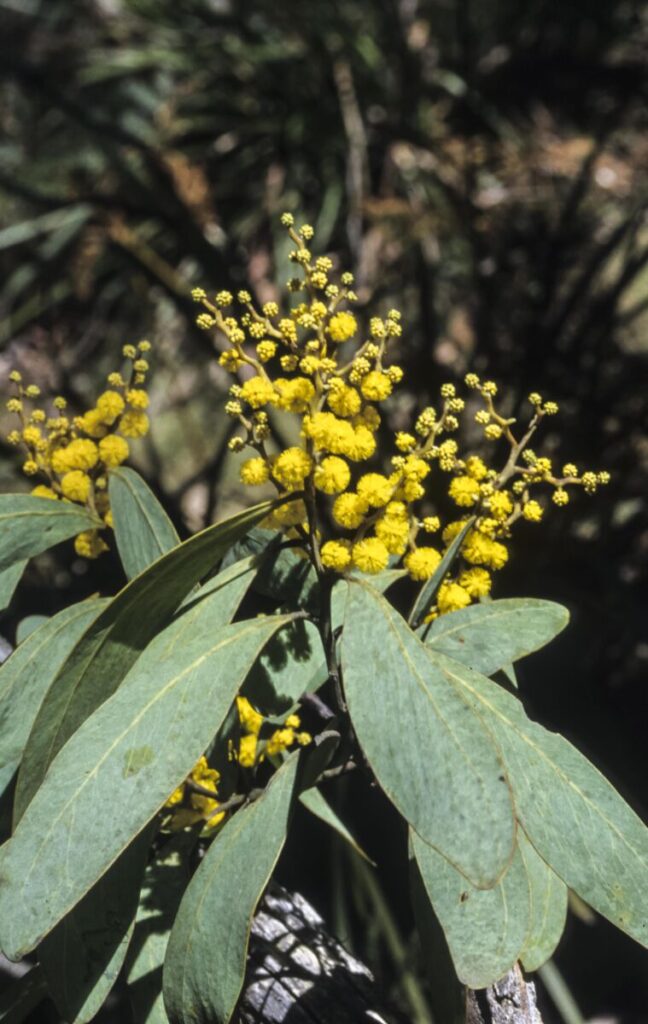
Acacia obliquinervia is a medium-sized tree, growing to 15 m high, in south eastern NSW, ACT and Victoria in dry to moist sclerophyll forest, often on sandstone. In NSW, it grows from the Goulburn River Valley on the central western slopes, south through the tablelands.
Acacia podalyriifolia
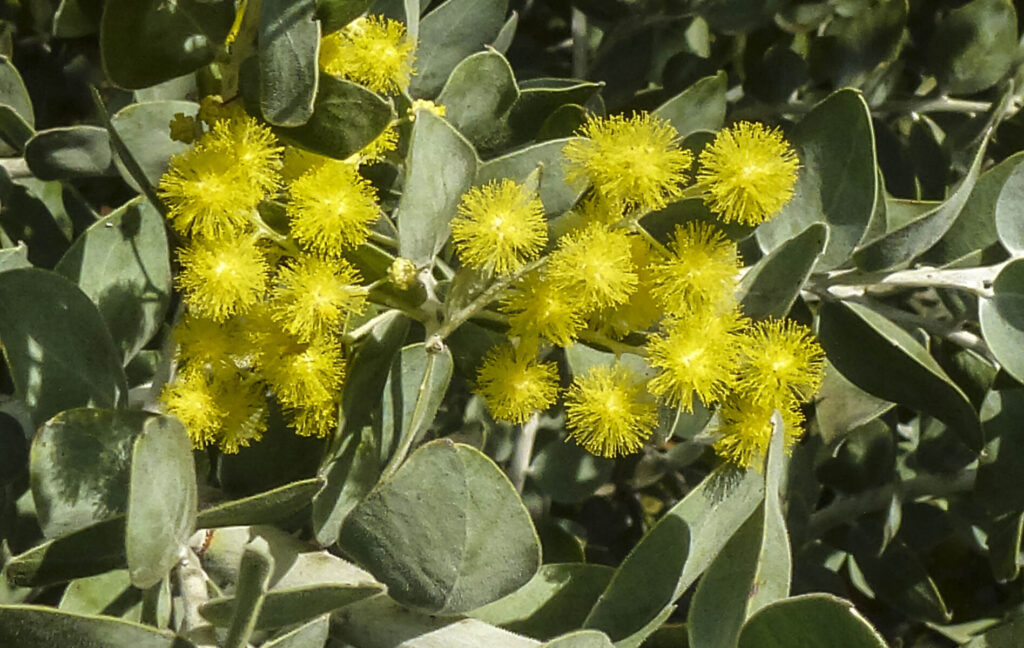
Acacia podalyriifolia grows to 6 m high and wide, in open forest and woodland in south eastern Queensland and just into the top of NSW on the North Coast.
Acacia decurrens

Acacia decurrens is a tall shrub to tree, reaching 12 metres tall. The bark is green with green branches which have winged ridges.
Acacia melanoxylon
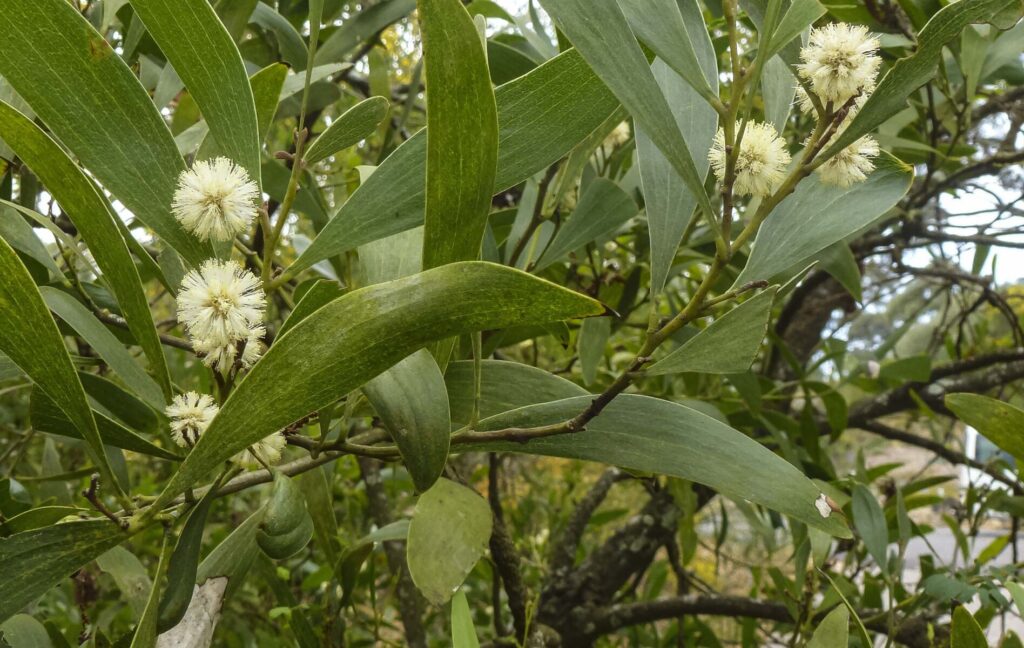
Acacia melanoxylon is a tree growing to 30 m tall in a variety of habitats, chiefly in wet sclerophyll forest and in or near cooler rainforest from Queensland to South Australia including Tasmania. In NSW, it is commonly encountered up and down the coast, tablelands and it is scattered on the western slopes.
Acacia matthewii
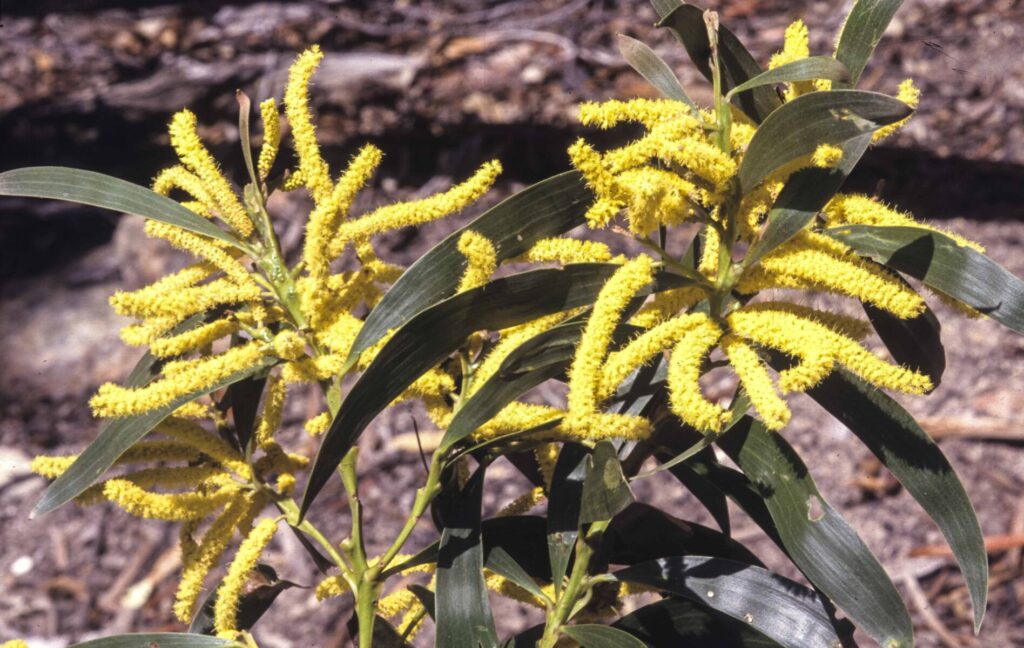
Acacia matthewii is a tree growing to 15 m high, found on margins of wet sclerophyll forest, dry sclerophyll woodland and in pure stands, on sandstone and shale.
Acacia maidenii
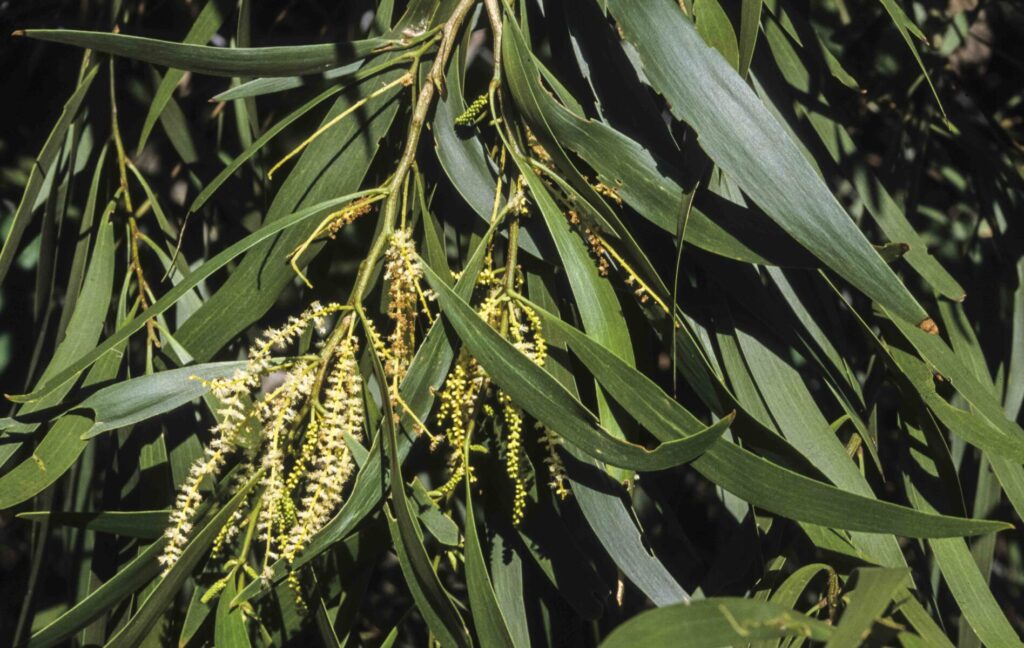
Acacia maidenii is a tree growing to 20 m tall, erect or spreading, with deeply fissured bark. It is very fast growing, reaching 1.5 m tall in as little as five months.
Acacia longissima
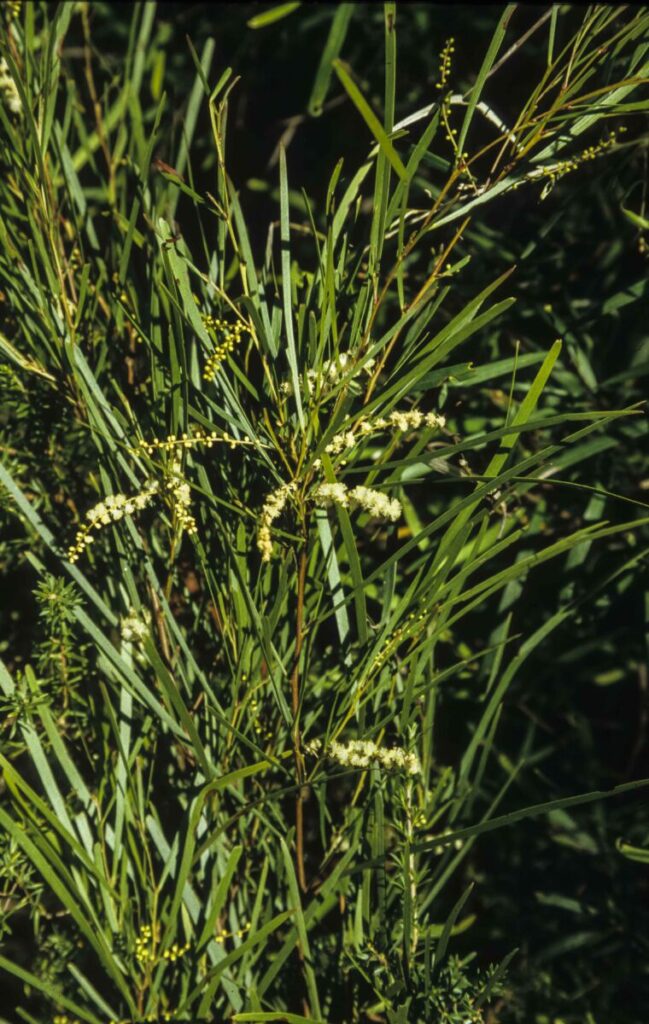
Acacia longissima grows near the coast and is found as far north as Nambour and Nerang in south-eastern Queensland, extending down the south coastal areas of New South Wales to around Batemans Bay. It is often found to inhabit the borders of rainforests in wet or dry sclerophyll forest.
Acacia mearnsii

Acacia mearnsii is a tree to 10 m tall, with smooth bark. It naturally occurs from Peats Ridge in NSW south, on the coast and tablelands divisions, to Victoria, Tasmania, and South Australia. It has naturalised in Western Australia. Found generally in wet sclerophyll forest, woodland and coastal scrubs.
Acacia leprosa
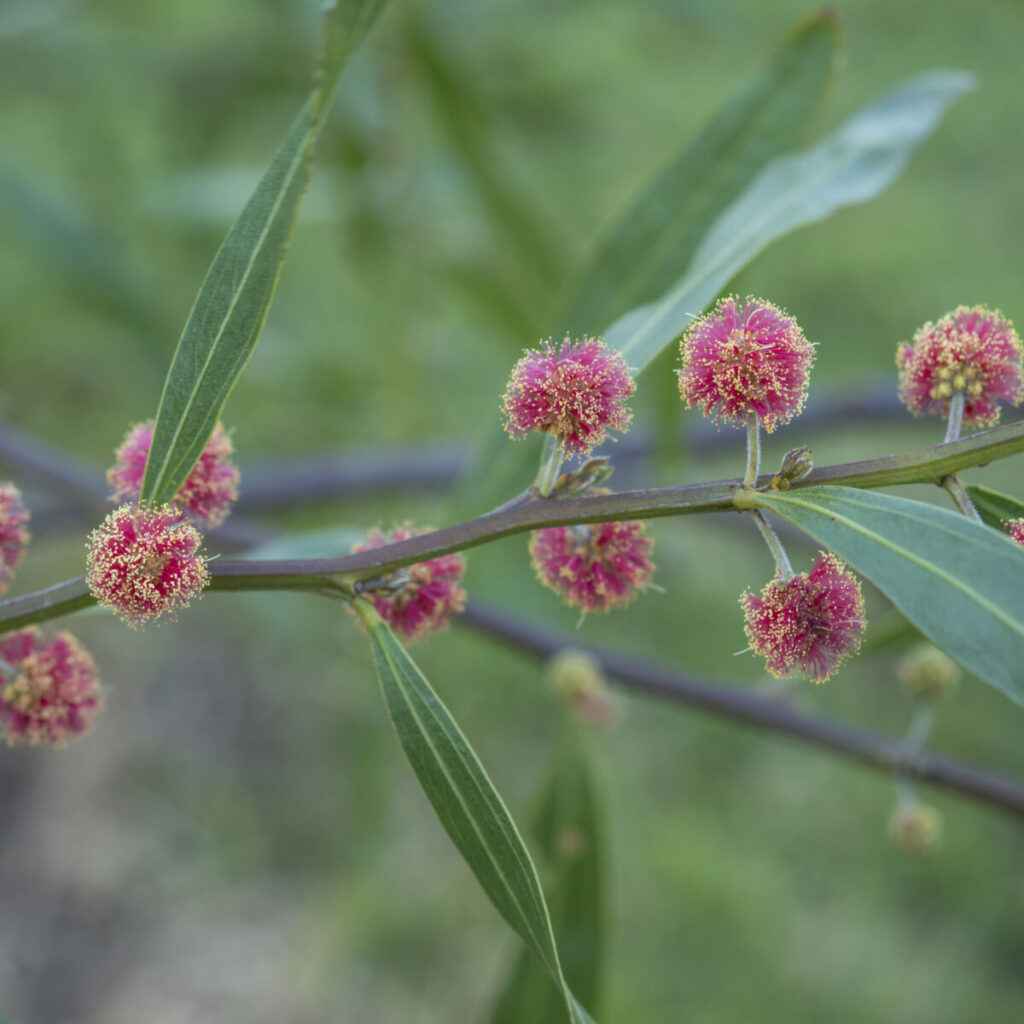
Acacia leprosa is a large shrub to 6 m, found in woodlands of the central and southern tablelands and western slopes, as well as the south coast of New South Wales, extending into Victoria. The cultivar “Scarlet Blaze” has unique coloured red coloured flowers, for a wattle and is the only cultivar that does. It was discovered in 1995 and is Victoria’s Centenary of Federation emblem.
Acacia hakeoides

Acacia hakeoides a shrub or potentially a tree reaching 6 m tall. Widespread plant, mainly in inland areas of NSW (tablelands to far western plains) as well as Queensland, Victoria, South Australia and into Western Australia. Grows in open forest, woodland and mallee areas, in sandy soils and clay loams.
Acacia baileyana
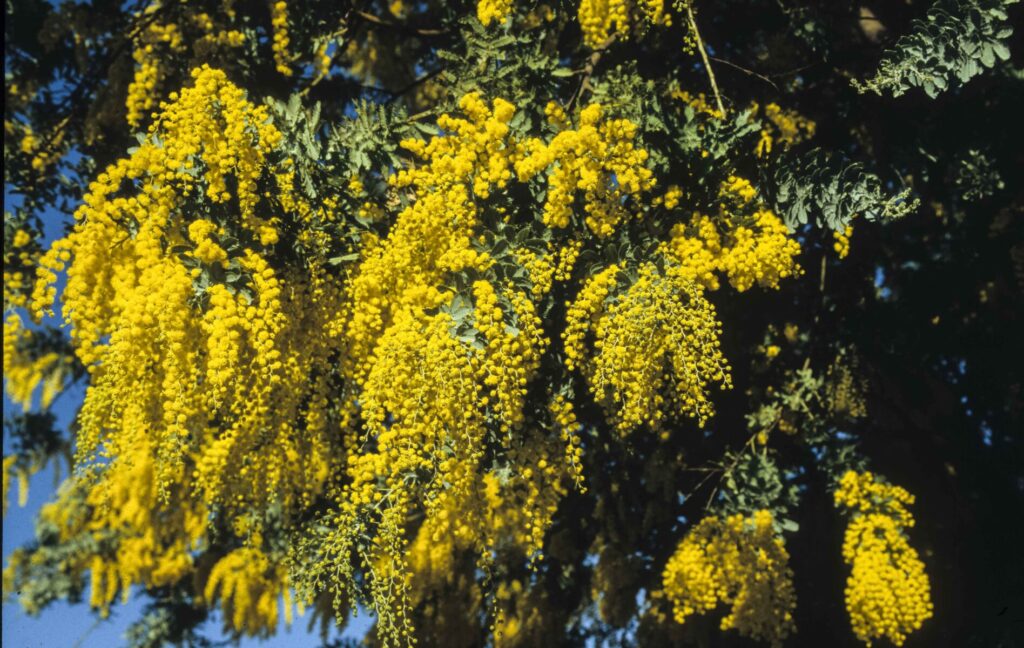
Acacia baileyana is a large shrub to small tree, growing to 8 m tall. It is indigenous to a very small area in southern inland New South Wales, comprising Temora, Cootamundra, Stockinbingal and Bethungra districts, on the western slopes subdivisions of NSW but has naturalised in places like Sydney and the northern and south tablelands, as well as Qld, Vic, SA and WA.
Acacia irrorata

Acacia irrorata grows as a tall shrub or small tree, to 12 m tall, mainly in dry or wet sclerophyll forest and on the margins of rainforest along the NSW coast, tablelands and western slopes. Also extends into QLD and Victoria.
Acacia filicifolia
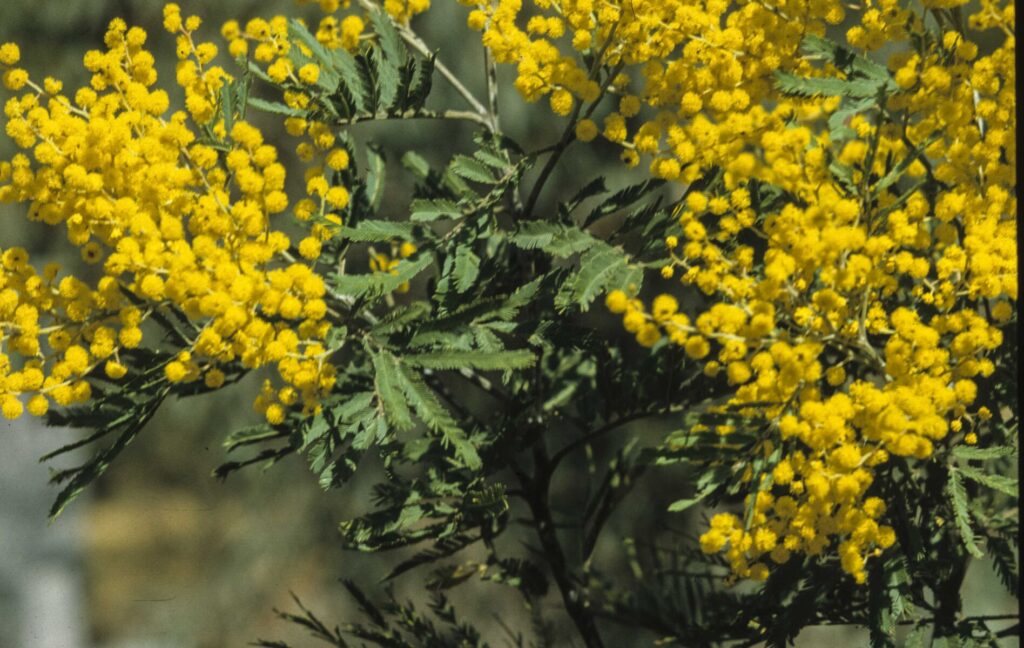
Acacia filicifolia is an erect shrub or tree, growing to a height of 15 m and is mostly found on the coast and tablelands of New South Wales, into the western slopes. It also grows in Qld.
Acacia floribunda
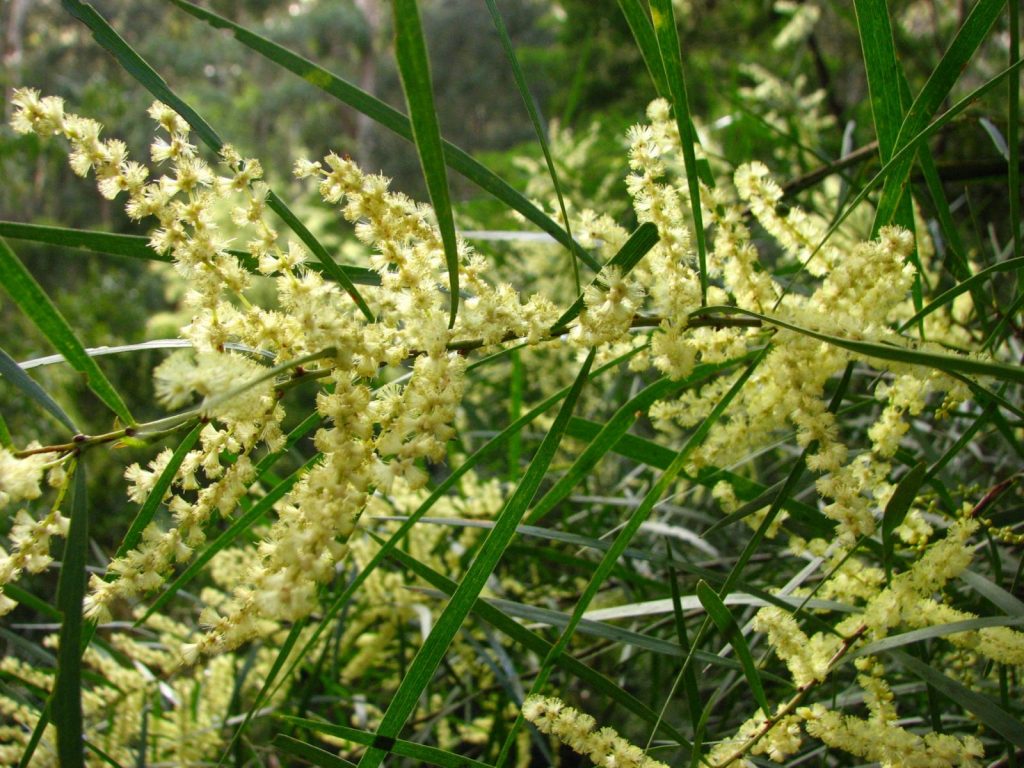
Acacia floribunda is a small tree / large shrub growing to 8 m tall. It is widespread in forests and woodlands in the sub-tropical and warmer temperate regions of eastern Australia from Victoria to Queensland.
Acacia elata

Acacia elata is a long-lived wattle-tree, potentially reaching 30 m. It is endemic to coastal areas of New South Wales from the Budawang Range in the south as afar as the Bellinger River in the north growing in rainforest and wet sclerophyll forests. It is considered a weed in Qld, Vic and WA.
Acacia falciformis
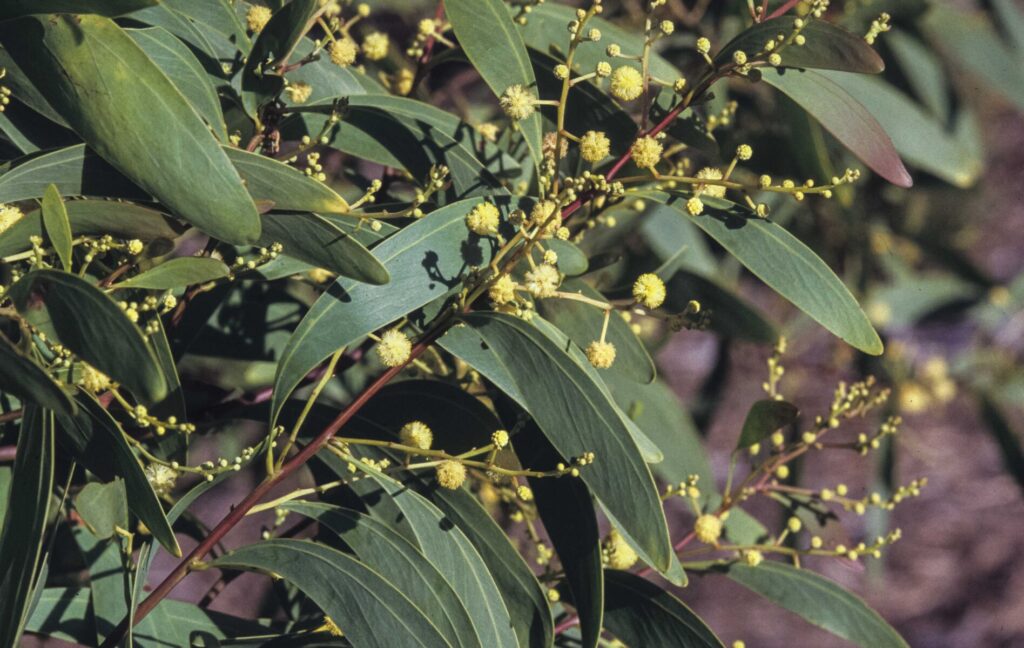
Acacia falciformis grows to 10 m high and has an erect or spreading habit. It grows down the east coast of Australia in coastal areas and extending over the Great Dividing Range to the western slopes in a variety of habitats including moist rocky slopes, gullies and along watercourses, It also grows in Victoria and Qld.
Acacia clunies-rossiae

Acacia clunies-rossiae is a bushy shrub or tree, growing in dry sclerophyll forest, in valleys, on slopes and ridges, and along creeks in the Kowmung River and adjacent Coxs River district of NSW, entirely within Kanangra-Boyd and Blue Mountains National Parks. It has a very restricted distribution.
Callistemon shiressii
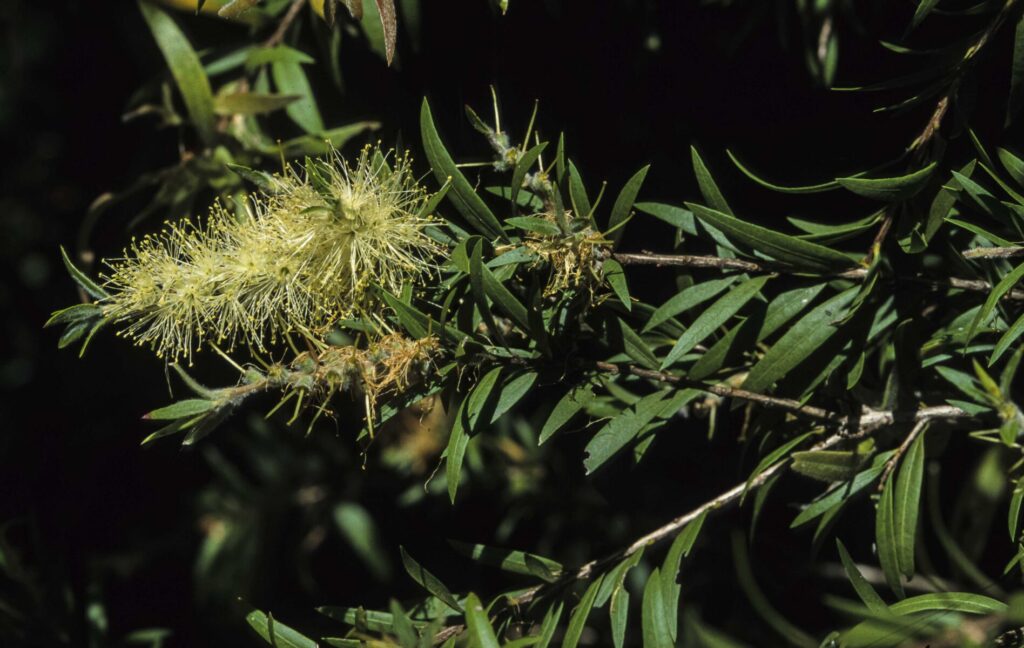
Callistemon shiressii is an uncommon shrub or small tree, to 12 m tall, occurring in and between the Singleton and Richmond localities in NSW. It grows on shale ridges in moist eucalypt forest and rainforest as well as along riverbank.
Callistemon sieberi
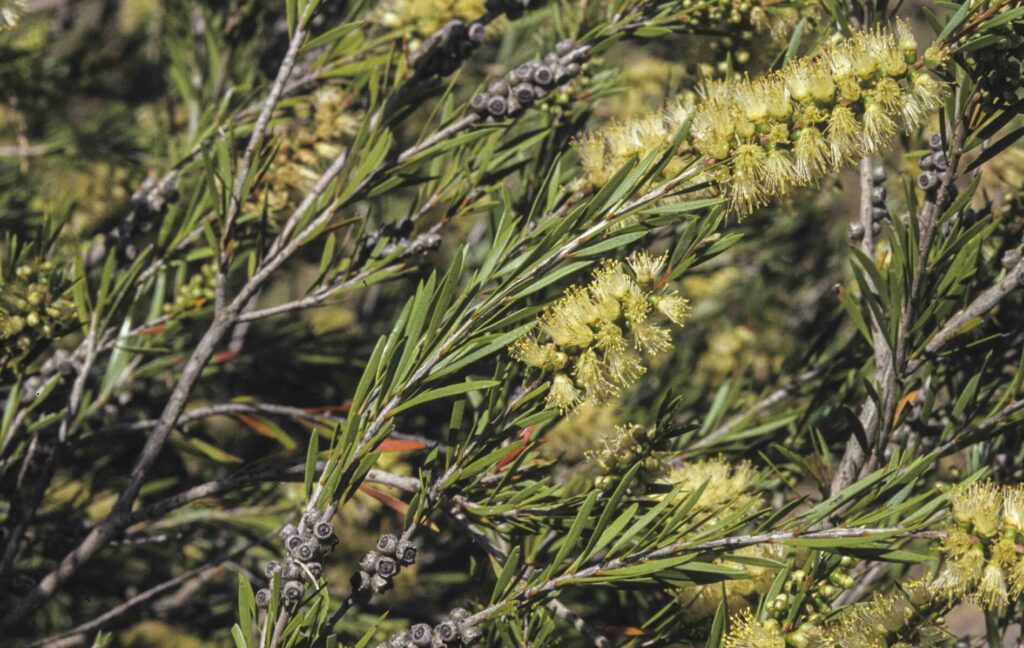
Callistemon sieberi a shrub or tree growing to 8 m tall, with fibrous bark, or hard, fissured bark on older plants. It is naturally widespread along watercourses, dried and rocky riverbeds and gullies on the coast, tablelands and western slopes and plains of NSW.
Leptospermum petersonii
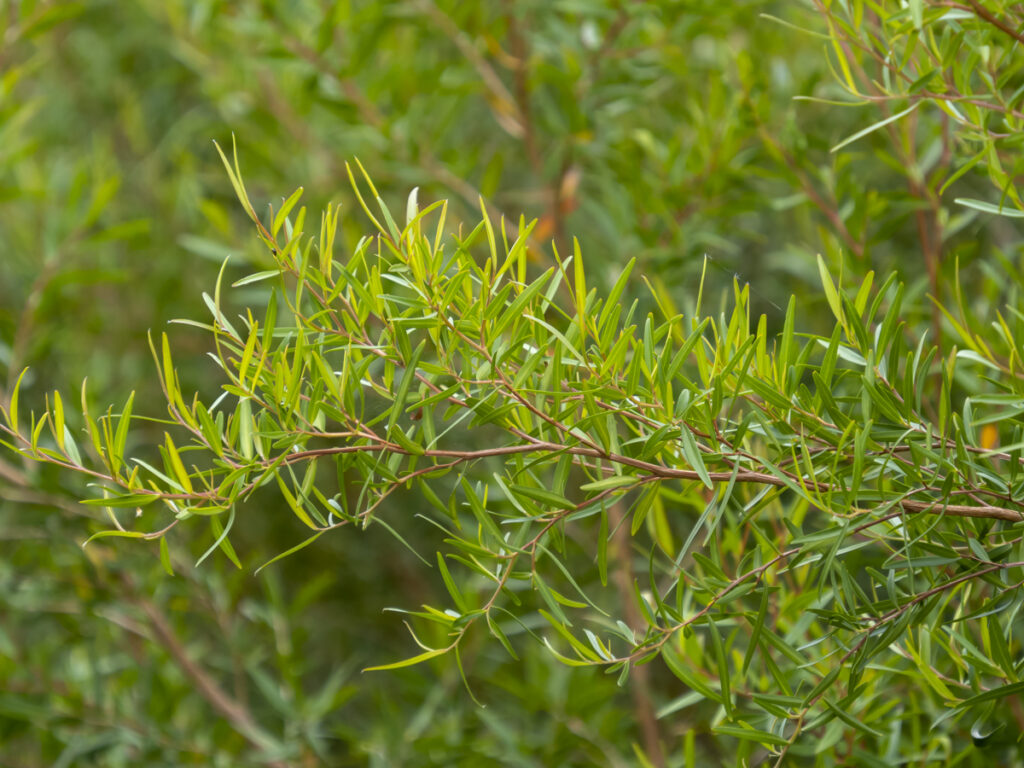
Leptospermum petersonii is a tree to about 5 metres tall and to 4 metres wide with flaky bark and soft light green foliage. It is tough and hardy, fast-growing, easily pruned and suitable for a wide range of positions.
Eucalyptus sideroxylon
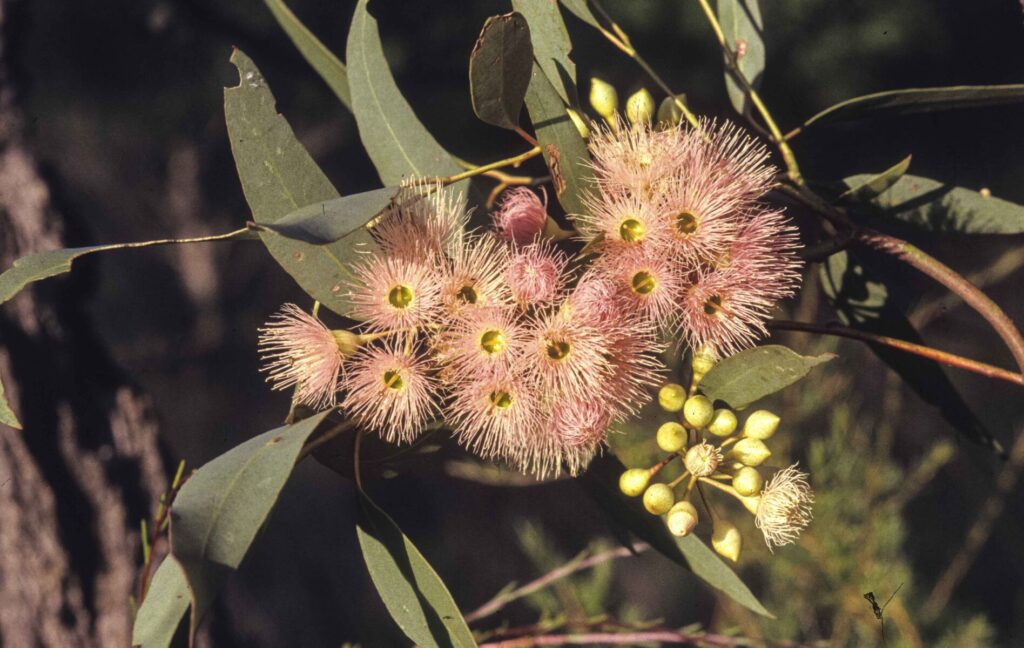
Eucalyptus sideroxylon is an ironbark eucalypt, potentially reaching 35 m high, though much shorter in cultivation. It is found in open forest and woodland, mainly on the tablelands, western slopes and plains of New South Wales, although it also occurs on the fringes of the Sydney basin, extending into Queensland and Victoria (through the inland parts).
Eucalyptus viminalis
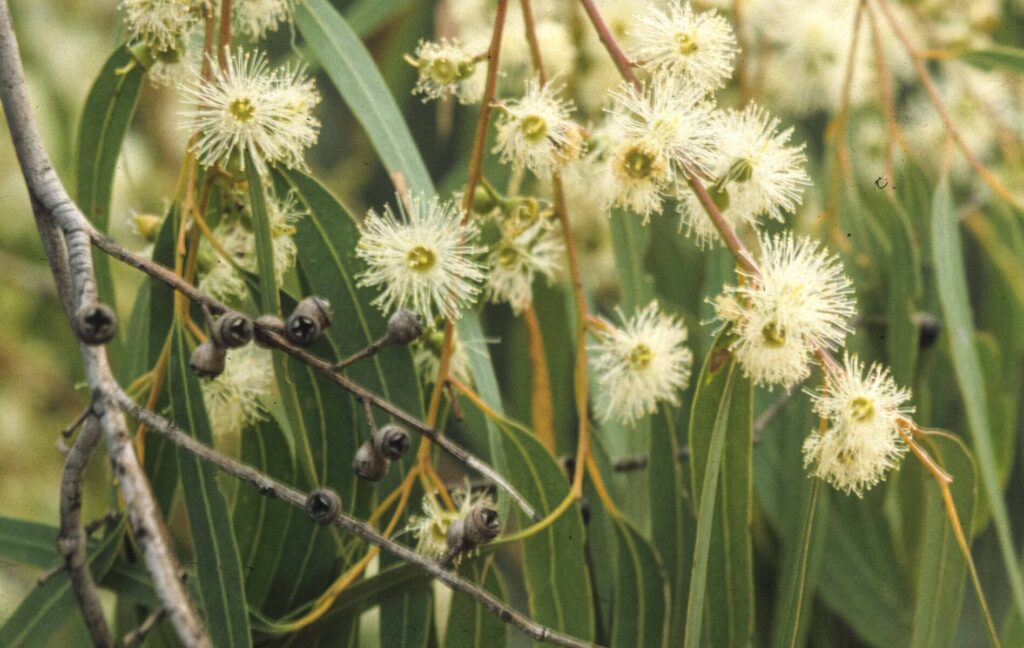
Eucalyptus viminalis is a gum-eucalypt potentially reaching 40+ metres, though usually much shorter. It is widespread and abundant, in grassy woodland or forest on fertile loamy soils in higher rainfall areas, from South Australia around the east coast to Queensland. A hardy, large shade tree suitable for parks or very large gardens.
Acacia schinoides
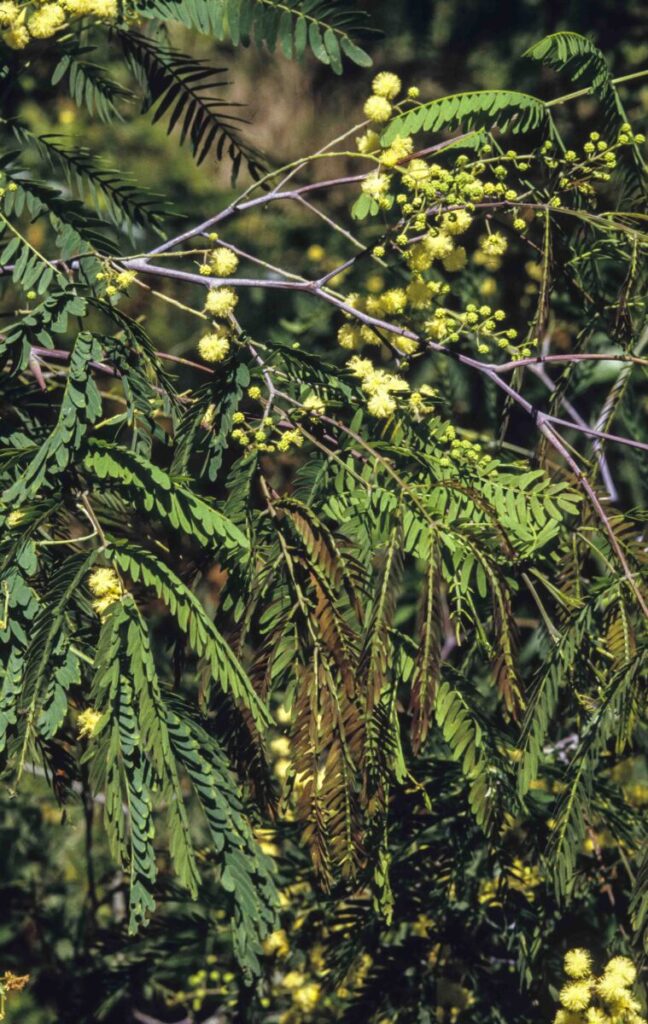
Acacia schinoides is an erect tree or shrub 10 m high and 7 m wide. It is restricted to coastal central NSW., north-western Cumberland Plain, Hornsby Plateau and the Hunter River Valley (Lane Cove to Maitland) growing in deep shady gullies usually near creeks. It has naturalised into coastal Victoria.
Aegiceras corniculatum
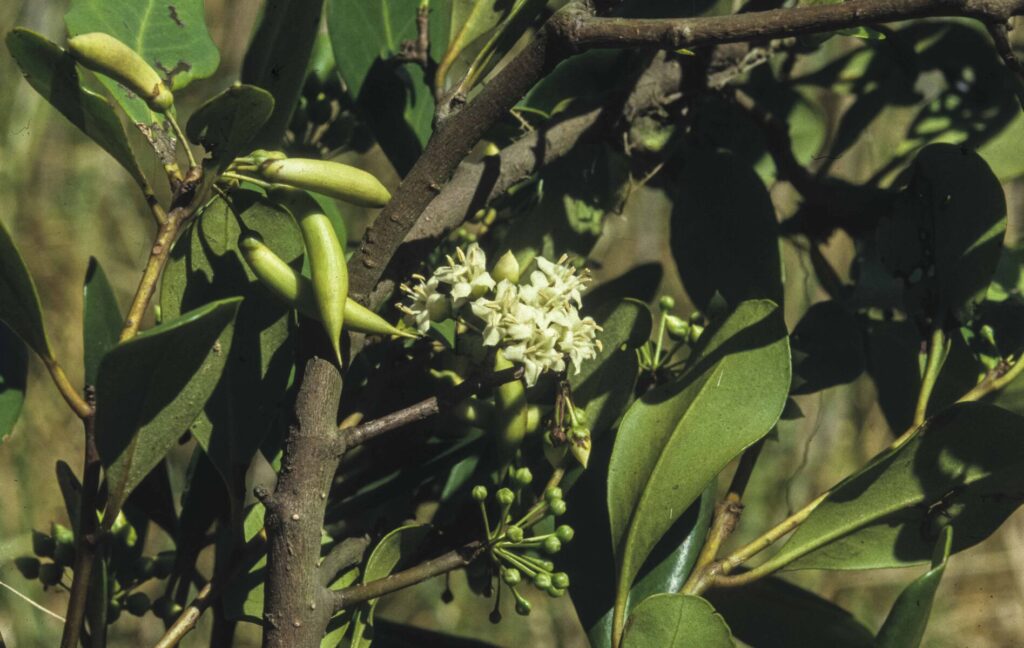
Aegiceras corniculatum grows as a shrub or small tree up to 7 metres high (but typically about 2 m) in NSW, Qld, WA and NT along the coast in tidal areas, and extending into south east Asia. Its fragrant, small, white flowers are produced as umbellate clusters of 10 to 30.
Acacia parvipinnula
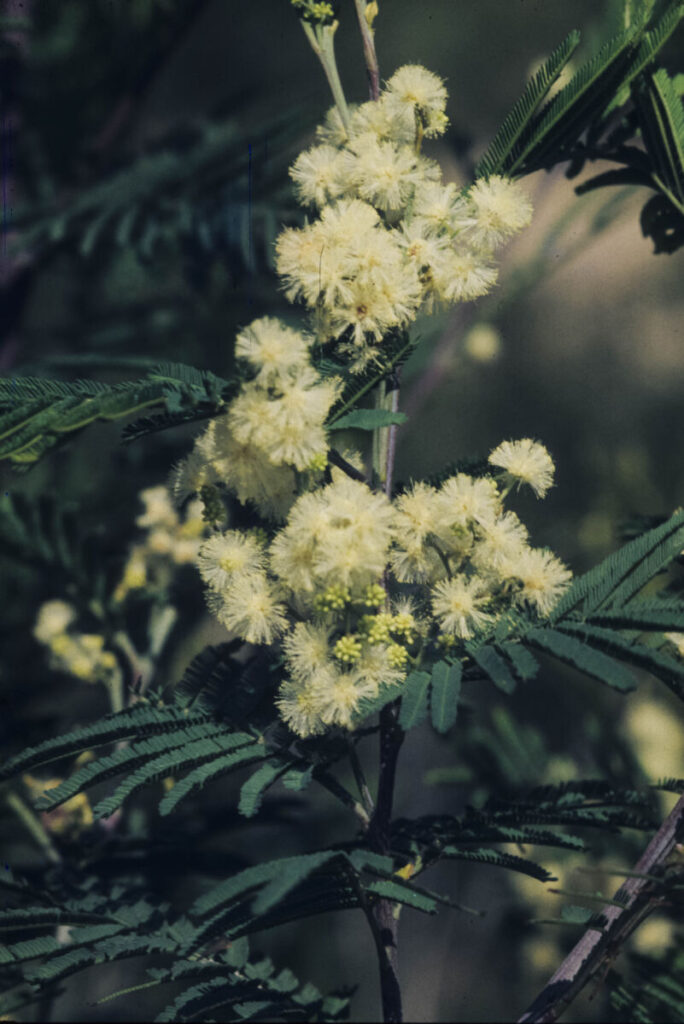
Acacia parvipinnula is a variable wattle in terms of height – it can grow to 10 metres tall but are often found much smaller. Acacia parvipinnula has a limited distribution in coastal areas of central New South Wales from around Singleton to around the Shoalhaven River where it is found in a variety of habitats.
Abrophyllum ornans
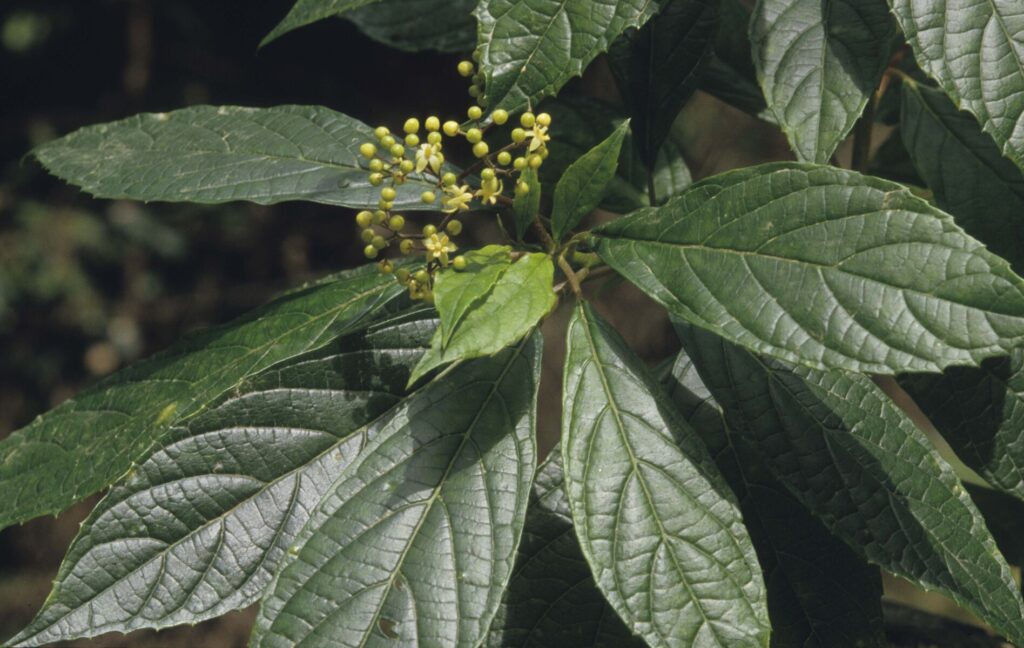
Abrophyllum ornans is a shrub to small tree to 8 m tall. It is grown mainly for its large shiny leaves and showy fruit. The small greenish-yellow to white, and slightly fragrant flowers appear in showy panicles from October to December. It is a useful edge or pioneer species for rainforest restoration.
Acacia binervia
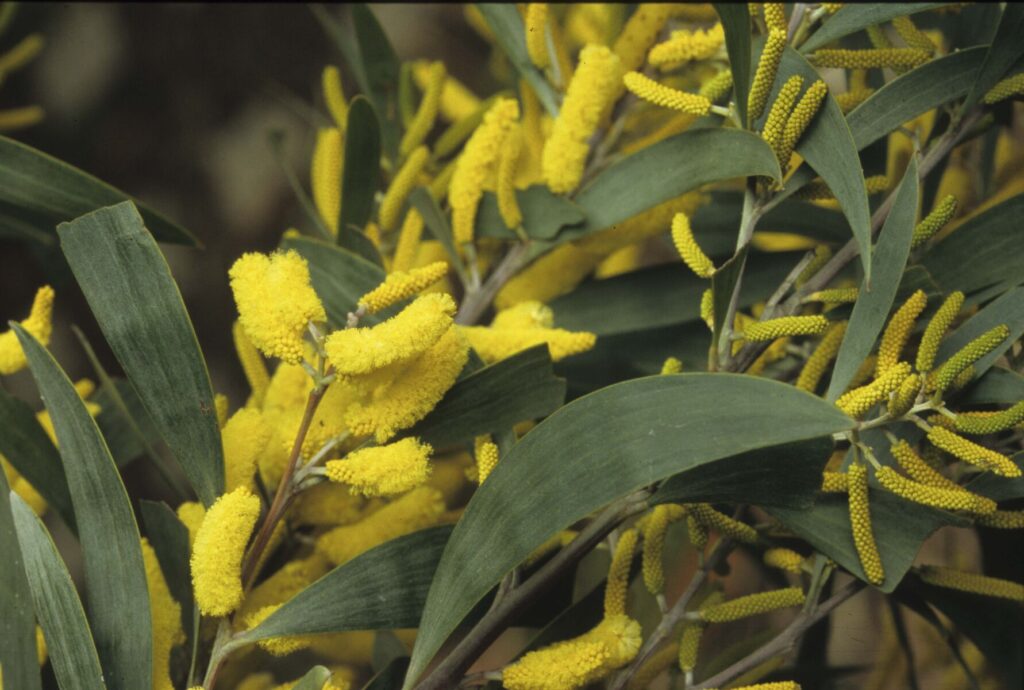
Acacia binervia is a shrub or tree from 2 to 16 m high, with dark brown to grey bark. The phyllodes are sickle-shaped to 15 cm long and about 2 cm wide; and are a striking blue-grey. The cylindrical pale to bright yellow spikes of flowers are very showy and appear in spring from August to October, followed by long seed pods.
Citrus australasica
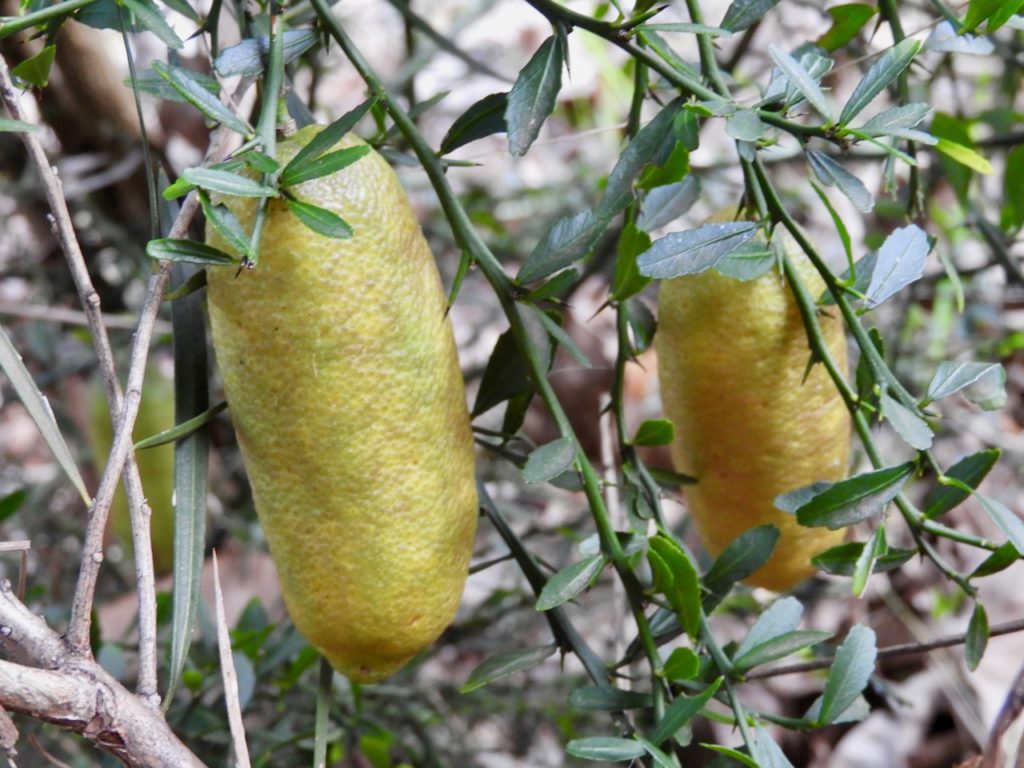
Citrus australasica, finger lime, seems to me to be pretty easy to grow. Mine is now about 5 years old, and has been flowering and bearing fruit for the last three years. I would guess that it is a grafted specimen, although it doesn’t say that on the label.
Melaleuca alternifolia
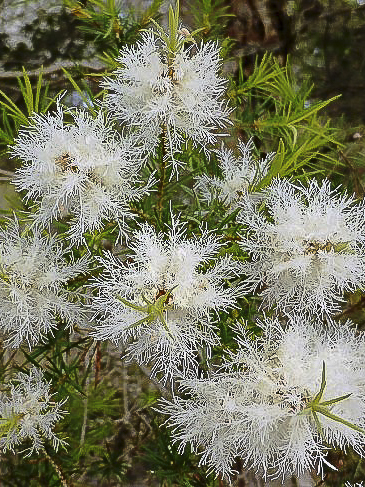
Melaleuca alternifolia is a tall shrub that reaches a height of seven metres. Bark is papery and peels away in strips. Foliage is light green and aromatic. Valuable Tea Tree oil is extracted from the leaves. White flowers are carried in many flowered spikes and are profuse and conspicuous.
Melaleuca ericifolia
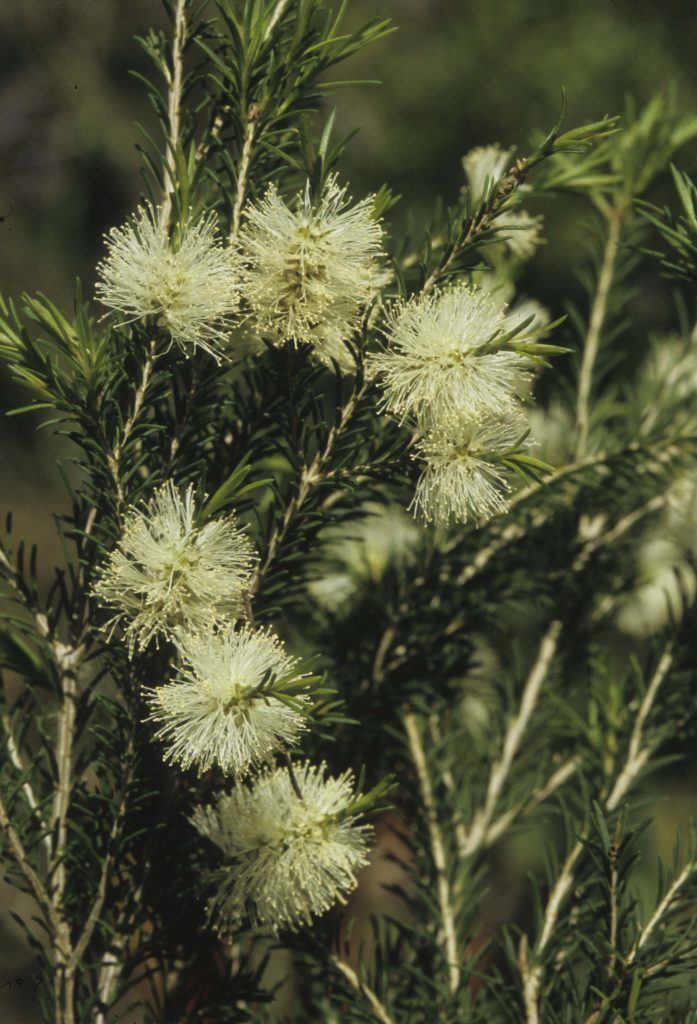
Melaleuca ericifolia is a tall shrub or small tree known as the Swamp Paperbark. Bark is papery and grey to brown. Juvenile growth is bright green. Adult leaves are dark green, linear and up to 15 millimetres long. Flower heads are dense, terminal, cylindrical, white to cream and about three centimetres long.
Hakea macraeana

Hakea macraeana, the Willow Needlewood, is a rounded plant that will develop into a tall shrub or small tree reaching a height of four metres. Growth habit is graceful and willowy. Leaves are bright green, terete (circular cross-section) and tipped with a sharp point. Flowers are white, carried in racemes and cover the branches during the flowering period that extends from August to October.
Acacia pycnantha
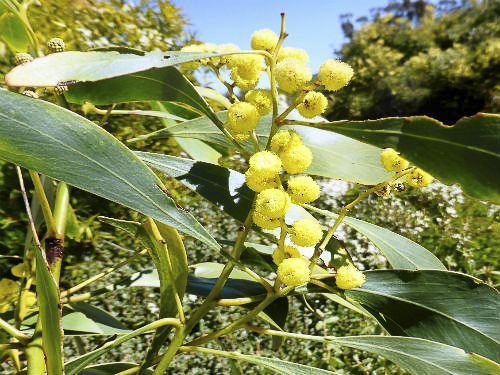
Acacia pycnantha, Golden Wattle, is Australia’s floral emblem. Golden Wattle develops into a tall shrub reaching a height of eight metres. Golden yellow flowers are held in large clusters that may hold up to 60 individual flowers. They cover plants in spring.
Acacia fimbriata
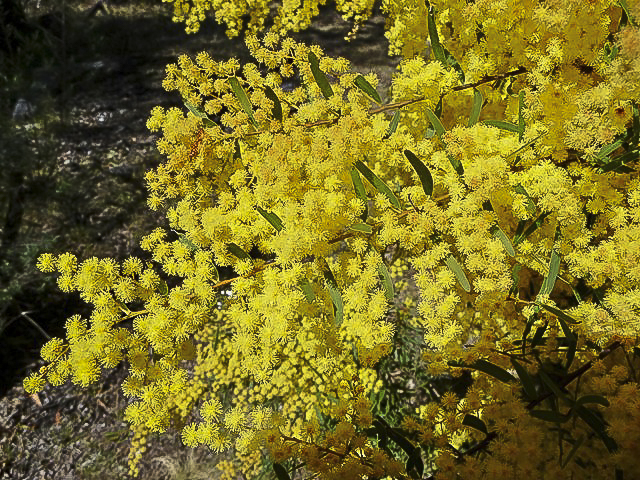
Acacia fimbriata is known as the Fringed Wattle because of the microscopic hairs along the phyllodes. The Fringed Wattle develops into a bushy shrub and if left unpruned will reach the height of a small tree. We prune our specimens annually to keep them bushy, at tall shrub height and flowering profusely.
Myoporum betcheanum
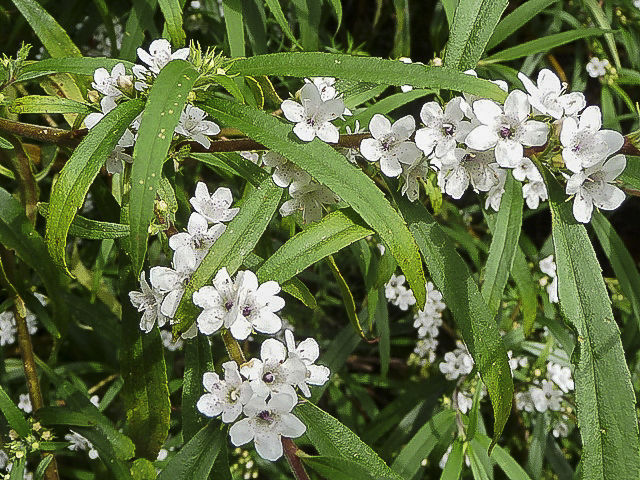
Myoporum betcheanum is a tall shrub or small tree that may reach a height of eight metres. Leaves are linear, up to six centimetres long and one centimetre wide. They are toothed and taper to a point. The flowers are white and 5 millimetres across. From one to eight flowers are carried in leaf axils between December and May. Globular fruits are white or brown and translucent.
Melaleuca styphelioides
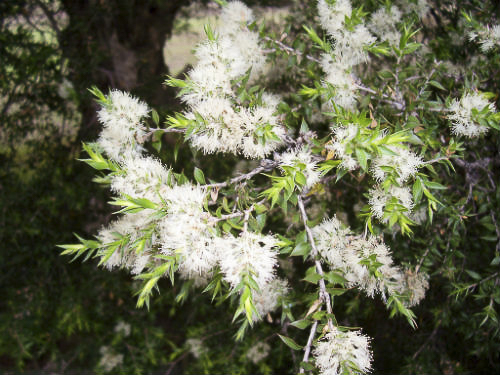
Melaleuca styphelioides, Prickly Paperbark, is a medium tree that may reach a height of 20 metres. The papery bark peels off in strips. Leaves are ovate, dark green, up to 15 millimetres long and crowned with a sharp point (hence the common name). The prickly foliage provides nesting sites for small native birds.
Melaleuca quinquenervia
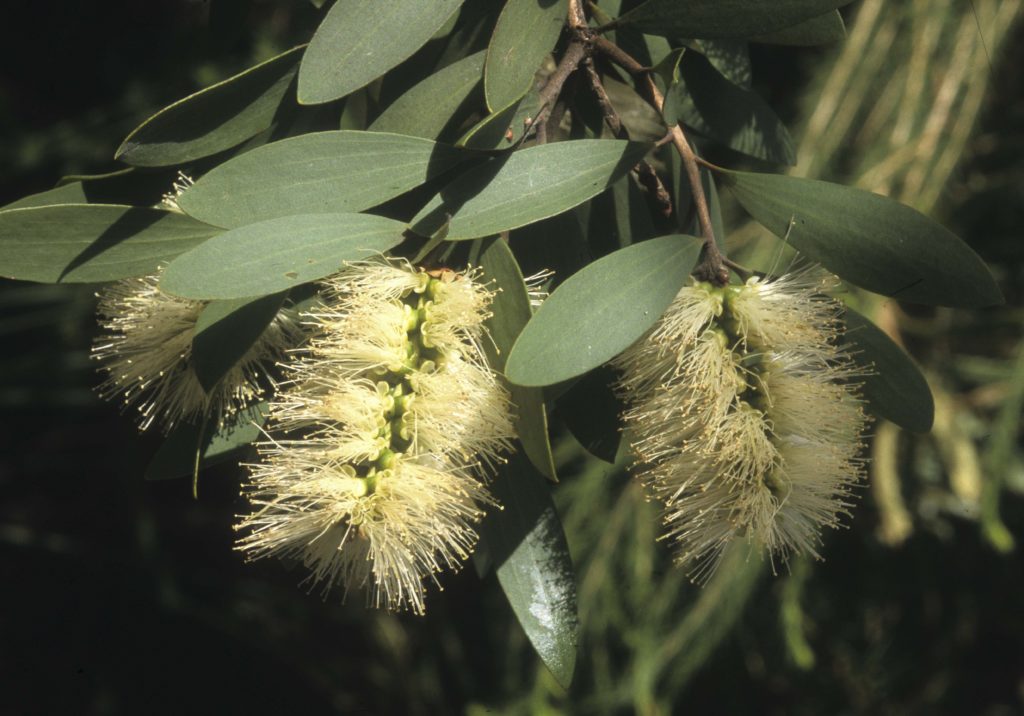
Melaleuca quinquenervia, Broad-leaved Paperbark, is a medium to tall tree. The bark is papery and peels off in strips. Leaves are alternate, lanceolate to elliptical, 30-70 millimetres long, usually with five prominent veins and with a stiff, leathery texture.
